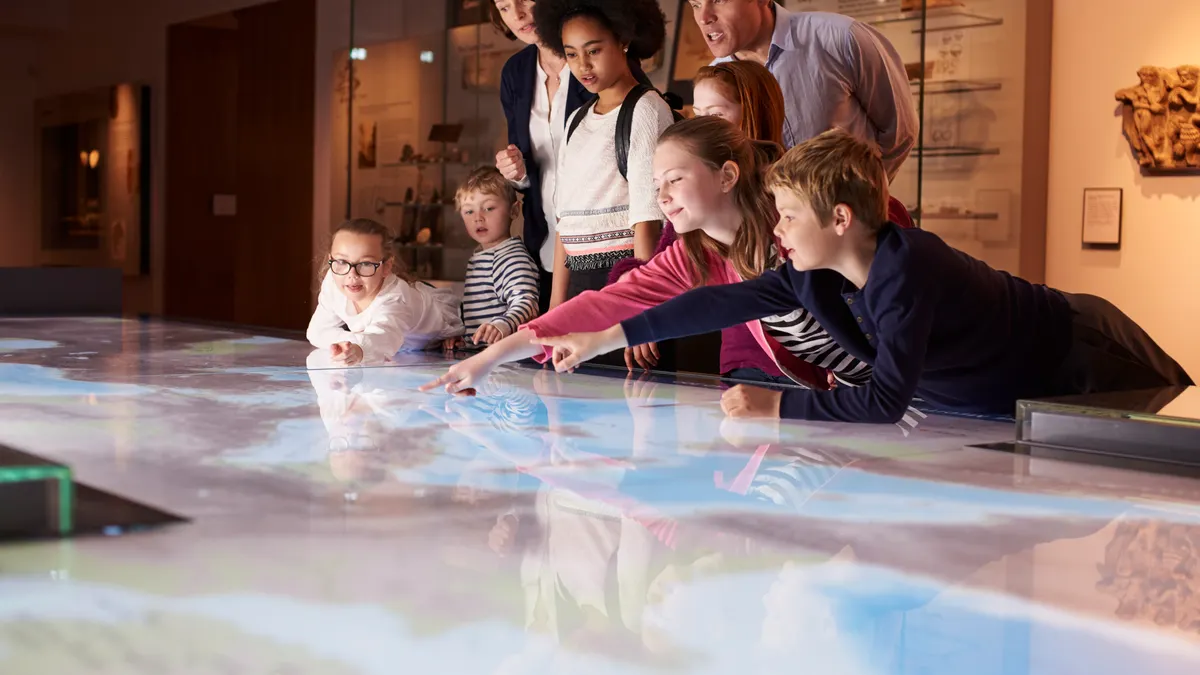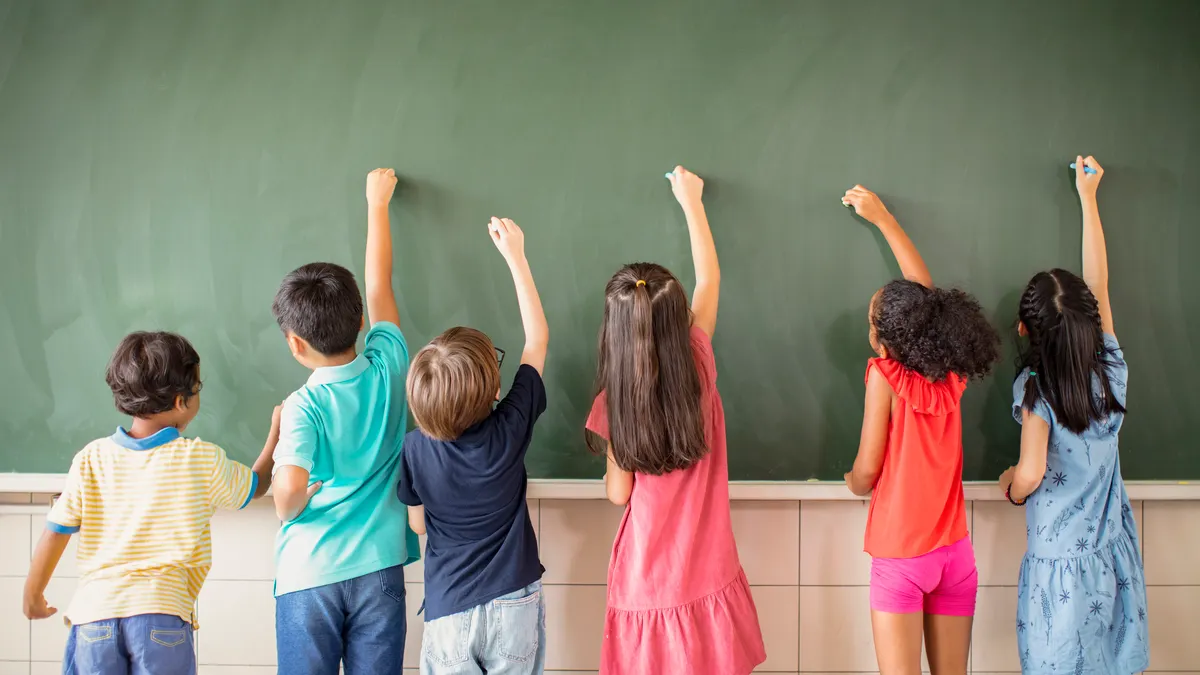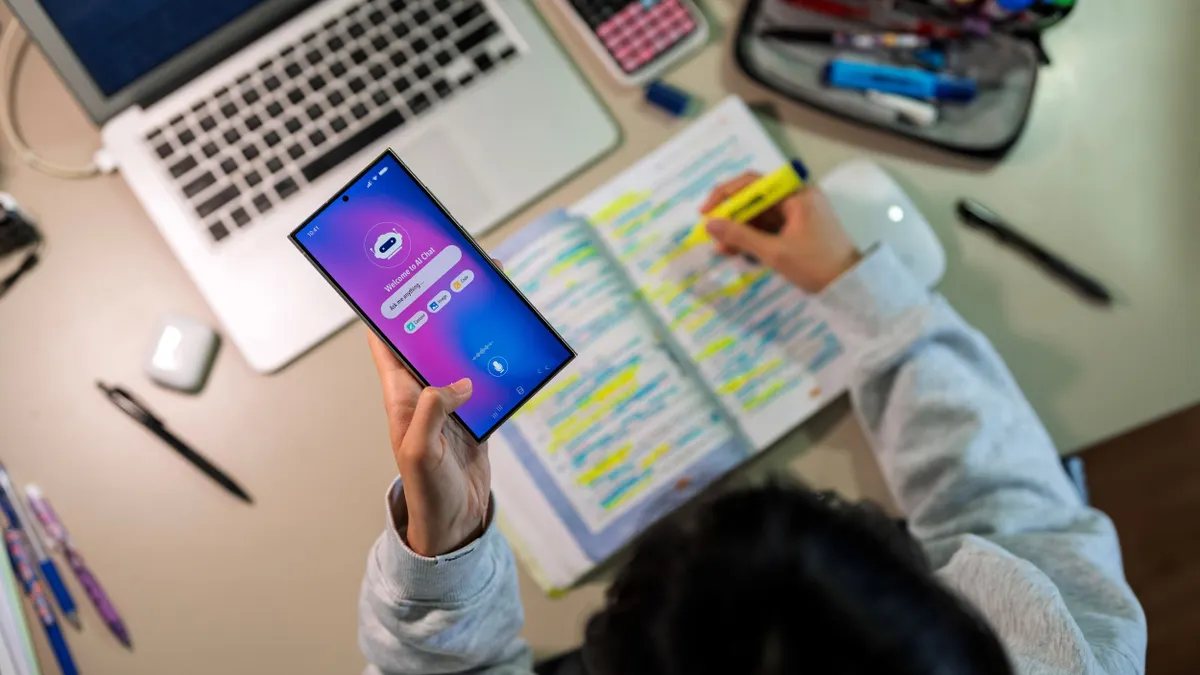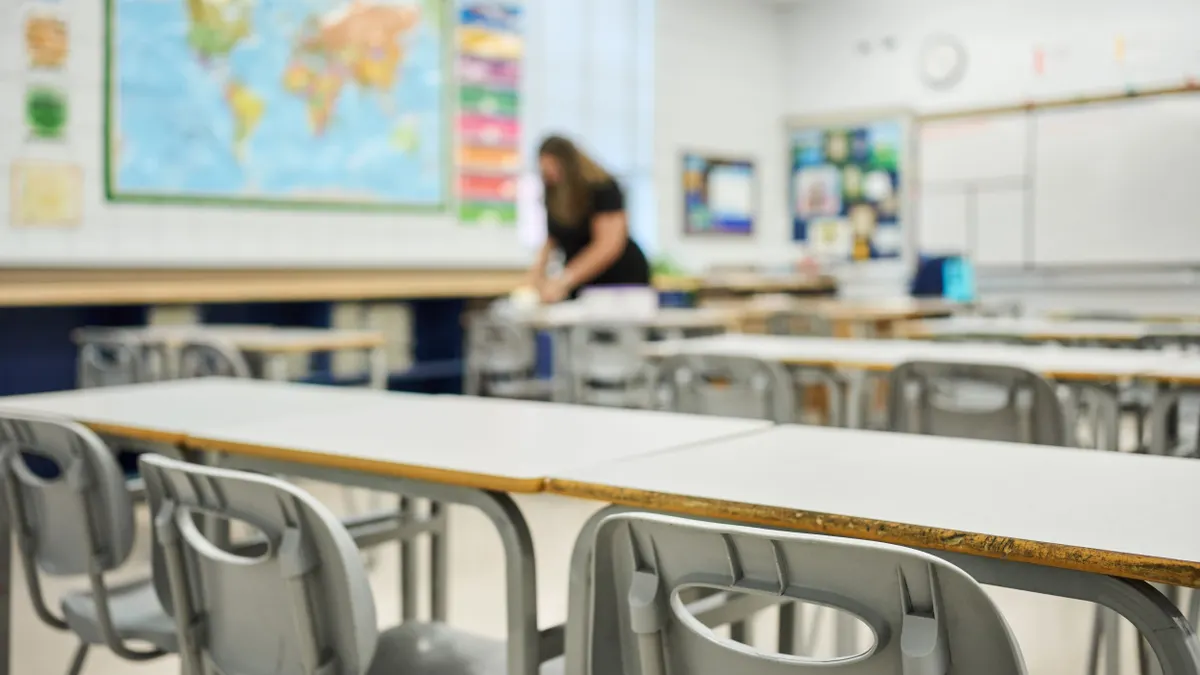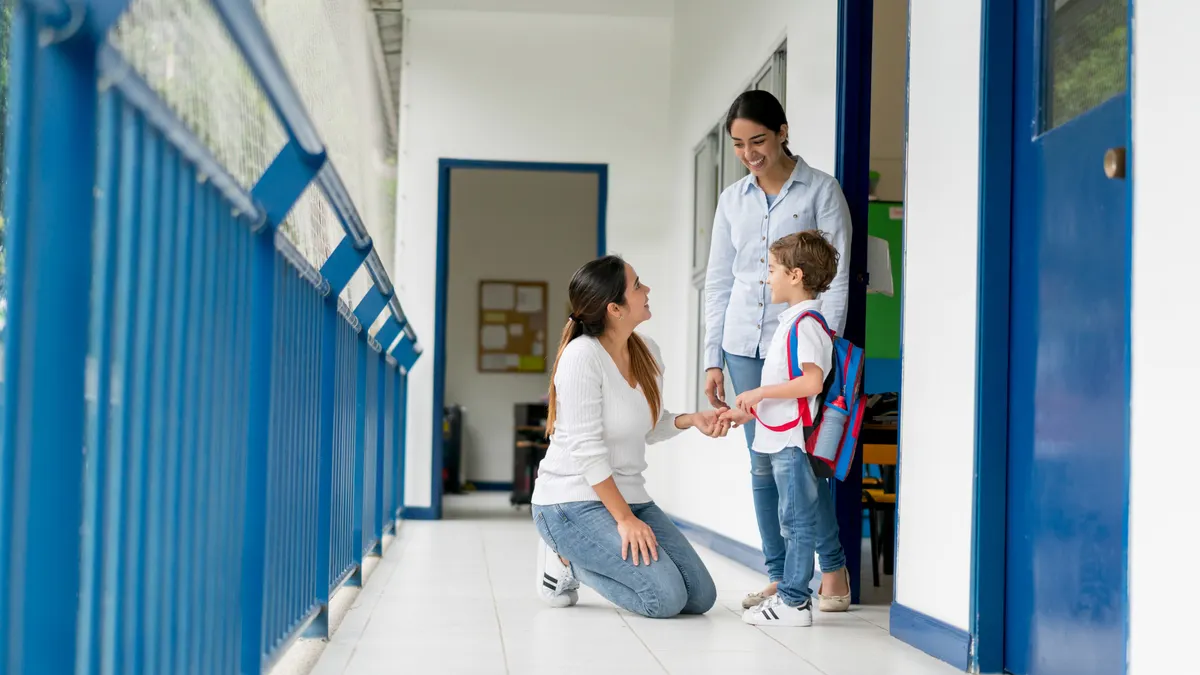When Illinois' Glenbrook High School District 225 thought about new layouts for classrooms, tables and chairs weren’t the only focus of the conversation. Instead, Ryan Bretag, the district’s director of instructional innovation, said the entire space — from the walls to floors — was reconsidered. The district looked at two points: student wellness and meaningful work they would produce, wanting to ensure each step taken in the redesign was made with these in mind.
“This didn’t mean things didn’t excite us or concepts weren’t intriguing but each one was questioned with how does this help us to achieve our why and is this the best possible way of getting to it,” Bretag told Education Dive by email. “In fact, one great example was how teachers moved away from large, traditional desks in the front because the drivers and dimensions created a 360-degree space that a) had no front nor no back, [and] b) opened opportunities for more involvement throughout the room.”
Learning boom
There’s more to consider when redesigning a classroom than just shifting the position of furniture. Some districts look specifically at what’s being taught in the actual classroom before making any changes, where one room ends up looking completely different from the room next door. To Shari Camhi, superintendent of schools for Baldwin Schools in Baldwin, N.Y., that aim is not only fine — it’s absolutely crucial.
“You don’t need the same thing stamped everywhere,” she told Education Dive. “You need to ask, ‘What is the instructional need?’"
Baldwin Schools has been working on redesigning classrooms across its district since the summer prior to the 2015-2016 school year. The process has included teachers visiting work sites from Google to Mashable so they could get a sense of where their own students might work one day, and how these spaces would look.
Camhi has also engaged teachers in other ways, inviting them to discuss changes they’d like in their rooms with her. In November 2017, 47 teachers asked for conferences, and the revamped rooms that stemmed from those meetings should be completed by the summer of 2019, she said.
The Baldwin school district has five elementary schools, one middle school and a high school with two distinct sites — and all have had classrooms redesigned through this process. Students may find a smart TV in one classroom, while an entire wall that can serve as a screen might be in another. The district has built a new TV studio, as well as a medical room with hospital beds and medical devices to simulate that setting.
Not surprisingly, 15 districts have reached out to Camhi to learn how they could make similar changes to classrooms, too. Camhi said she’s happy that most are curious about the process behind Baldwin Schools’ redesigns rather than vendor lists for furniture.
“It’s related to an overall philosophy around learning,” she said about her district’s undertaking. “The environment is more comfortable and inviting for learning, and it has encouraged more creative, discussion-based and innovative learning for kids.”
Student well-being
In Glenbrook’s district, student learning also informed how redesigns were handled at Glenbrook North High School and Glenbrook South High School. A lot of focus was placed on how the changes would affect students both “academically and social-emotionally,” said Bretag.
Research backs the idea that spaces where students learn can have a powerful impact on how students learn. A 2014 report, “Designing Classrooms to Maximize Student Achievement," noted that students can be swayed by structural details like lighting, as well as even simple decor such as posters hanging on the walls.
The report’s authors cite a 2011 study where a 4th-grade classroom hung inspirational posters and plants, which were found to help bring “sustained improvements in engagement and reduced disruptive behavior,” the authors wrote.
While hanging images on the wall are a move any educator can make quickly, structural changes are also crucial, co-author Sapna Cheryan told Education Dive by email. Small adjustments can certainly move classrooms closer to an “optimal learning environment,” Cheryan, currently an associate professor at the University of Washington’s Department of Psychology, said. But bigger changes need to be considered, too.
“Some symbolic changes might be cheaper than structural changes, but that doesn’t mean they can be a substitute for the necessary structural changes,” she said. “We need both positive structural and symbolic environments for students to have optimal learning environments.”






